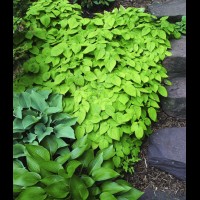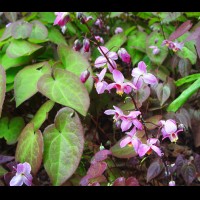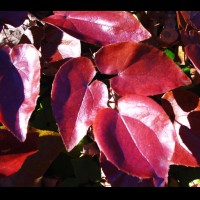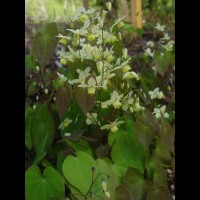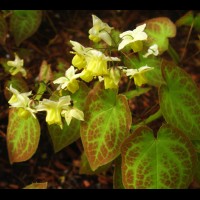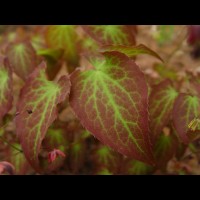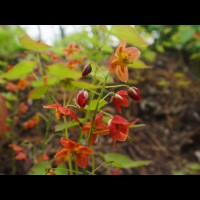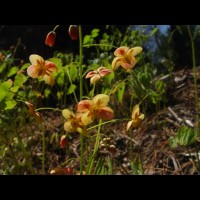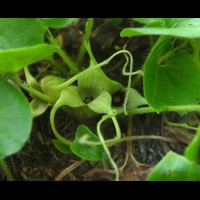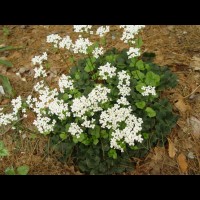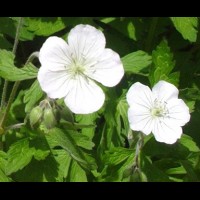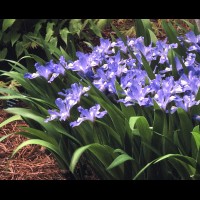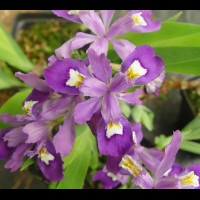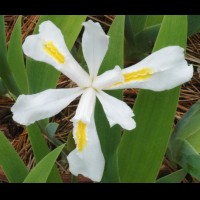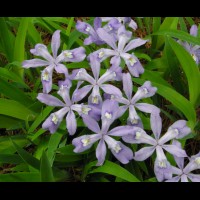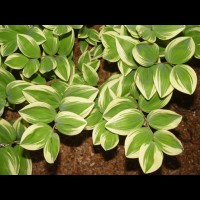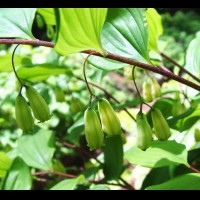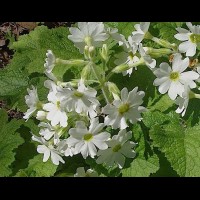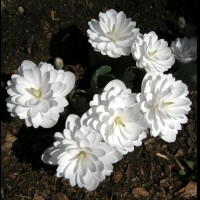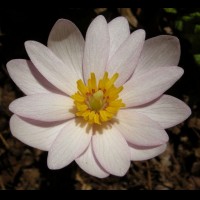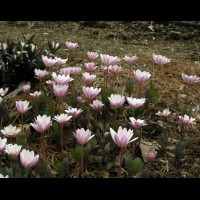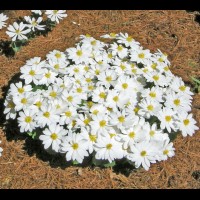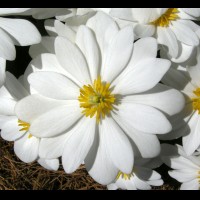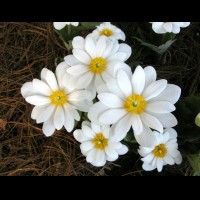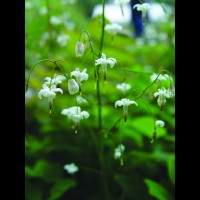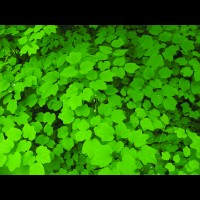Epimedium alpinum
Epimedium alpinum (Cc. 920002)
This drought tolerant spreading species from southern Europe sports very small flowers held below and among medium-sized leaflets. Inner-sepals are red behind creamy-yellow petals/spurs. 12" tall. The leaflets flaunt a complementary thin, mascara-like red edge while the plant is in bloom. Spreads 8-12" a year, forming an open groundcover. Semi-evergreen.
Epimedium alpinum 'Shrimp Girl'
E. alpinum ‘Shrimp Girl’ (Cc. 930006)
The clone ‘Shrimp Girl’ is shorter in height (6-8”) than E. alpinum with shorter rhizomes; spreading only 4-5” a year. Its dense growth habit and thick foliage make it far superior at crowding out weeds. Tiny blooms appear below the leaves and are not usually noticeable unless the plant is elevated on a hillside. A short, neat, ground-covering Epimedium with a "cool" name. Semi-evergreen.
Epimedium davidii "Robust Forms"
E. davidii “Robust Form” (Several clones)
Like many species, E. davidii varies from one location to another. In 1999 Darrell helped to identify Epimediums purchased from China by a local nursery. Overall they were more robust and vigorous than any of the clones that he had collected in China, with flower stems from 18-24” high bearing the typical bright yellow blooms. They also had bolder evergreen foliage than any we have grown. The clones we offer have attractively red-mottled spring leaflets. Spreads slowly by occasional 4-8” rhizomes to form a mass 2’ wide in about 5 years under good growing conditions.
Epimedium epsteinii
E. epsteinii (Several clones/Cc. numbers)
Discovered in 1994 and named after an outstanding plantsman—the late Harold Epstein. For half a century he grew Epimediums to perfection in his garden “La Rocaille” in Larchmont, NY.
This species has the widest sepals in the genus, nearly 1/2" across and slightly longer, pure white and a striking contrast to the reddish-purple spurs and cup. There are 10 (usually) to 30 of these medium-large flowers per stem. 6-10" tall with medium-sized, dark glossy evergreen leaflets. Spreads 6-8" a year forming a dense low groundcover. Benefits from some winter mulch in Zone 5.
Epimedium grandiflorum f. flavescens #2
E. grandiflorum f. flavescens #2 (Cc. 940550)
Of the over 50 distinct clones of E. grandiflorum f. flavescens that Darrell brought back from Japan, this is by far the earliest to bloom with large, pale greenish-yellow flowers held below large, elliptical, bright apple green leaflets. Large, mature leaflets etched by the nearly parallel main veins make a bold, elegant garden statement. From the Kyoto Botanic Garden in Japan, it is very different from other clones circulating in the U.S. 20" tall. Clear yellow fall foliage. Spreads by 2-4" rhizomes.
Epimedium grandiflorum f. flavescens #3
Epimedium grandiflorum f. flavescens #3 (Cc. 950129)
Originally sold by Siskiyou Rare Plant Nursery under the invalid name E. macranthum ‘Aureum’. At 14”, it is shorter than most other E. grandiflorum f. flavescens clones offered here. Beautiful red-copper young leaflets unfurl over large, pale yellow flowers. After bloom, large, bold, oval-shaped leaflets expand to form an impressive mound. Clear yellow fall foliage color. Spreads by 2-4" rhizomes.
Epimedium grandiflorum f. flavescens #5
E. grandiflorum f. flavescens #5 (Cc. 970232)
Reminiscent of E. koreanum ‘Harold Epstein’, with large soft yellow flowers and huge rounded leaflets, nearly as broad as long. However, its spreading rhizomes only grow 2-6” per year, forming a much thicker mass in the garden. Large, light yellow flowers held below the emerging foliage. 20” tall. Rusty red fall color.
Epimedium grandiflorum f . flavescens #6
Epimedium grandiflorum f. flavescens #6
Cc. 950188
Distinctive for the exaggerated extra points on each terminal leaflet. In spring, the large leaflets have a thin dark bronze edging with an overall light bronze blush. The smooth leaf surface and very delicate spring coloration creates a soft effect. Sizeable clusters of large, showy, pale yellow flowers are borne on long sprays beneath the leaves as they unfurl. 16” in bloom, to 20” tall. Spreads 2-4" per year.
Epimedium grandiflorum forma flavescens "Aomori Forms"
E. g. f. flavescens “Aomori Forms” (Several clones/Cc. #)
Prof. Stearn’s 1938 Epimedium monograph mentions “Faurie’s robust specimens from Aomori in Honshu, Japan”. Darrell explored the region in 1997. After several inquiries, their host led them to a steep hillside of densely planted Cryptomeria japonica, beneath which grew knee-high Epimediums with leaflets the size of your hand! Spring leaflets often flushed bronze-purple on 15-24” stems. Large, light yellow flowers open beneath the unfurling leaves. Rhizomes spread 2-4” a year, creating massive clumps over time.
Epimedium grandiflorum f. flavescens 'Chocolate Lace'
E. grandiflorum f. flavescens ‘Chocolate Lace’ (Cc. 980200)
***2003 Cobblewood Introduction***
Yummy, milk-chocolate tones on the emerging spring leaflets later melt into a rich burgundy tracing over a green backdrop with deep purple edges, before they mature to green. Large creamy, yellow-green flowers are held below the foli
Epimedium koreanum 'Harold Epstein'
Epimedium koreanum ‘Harold Epstein’ (Cc. 930004)
A very cold hardy clone with huge flowers for an Epimedium— gorgeous and butter yellow. Named in honor of Harold Epstein by plantsman Jerry Flintoff, its enormous leaflets can reach over 6” long and 4-1/2" wide. Spreads 6-12" a year. It usually takes 2-3 years to establish itself and become most impressive. The flowers emerge before the leaflets unfurl in early spring. E. koreanum is notorious for just putting up one set of leaves per node each season. If the leaf suffers damage, the rhizome will remain dormant until the following year. ‘Harold’ is a great bold-textured vigorous ground cover for large areas where it can spread unimpeded. It is especially useful in combination with early spring bulbs for sequential bloom. After bloom the expanding leaves serve as camouflage for the dying bulb foliage. 15" tall.
Epimedium leptorrhizum Y44
Epimedium leptorrhizum Y44 (Same clone/Sev. Cc. num.)
From Guizhou Province in China, its large light lavender-pink flowers and medium-sized leaves are similar to those of E. brachyrrhizum-- elongated and arrow-shaped, with a corrugated texture. However, it spreads by thin rhizomes that grow 8”+ a year with foliage 6-8” tall. Forms a thick, low evergreen groundcover. Reddish fall color. Evergreen.
Epimedium leptorrhizum 'Hubei Treasure'
Epimedium leptorrhizum ‘Hubei Treasure’ (Cc. 001259)
***2005 Cobblewood Introduction***
Traveling along the Sichuan/Hubei Province border in China on a transitional day between target locations in November of 2000, Darrell stopped to stretch his legs. There he found an Epimedium in the cracks of a short cliff along a farmer’s field. With long hairs on the leaves and long rhizomes, he identified it as E. leptorrhizum, and collected a few samples. Fortunately this clone has larger flowers with near-white spurs backed by rich pink inner sepals, a striking deviation from the typical pale lavender-pink blooms of this species. The evergreen leaves are larger than those of the species. Spreads by 2-4" rhizomes.
Epimedium macrosepalum
E. macrosepalum (Several clones/Cc. numbers)
An evergreen and drought-tolerant species from the S.E. coastal region of Russia. The flower of this species makes up for its paucity of flowers with their size. The flowers have enormous (for an Epimedium) inner sepals that are a heavenly shade of lavender-pink. Unlike most inner sepals that follow the curve of the spurs, these petaloid structures reflex back like huge rounded wings, arching above the down curving spurs, like an insect taking flight. Both the cup and the tips of the spurs fade to white. Ground hugging foliage 4-8” high is composed of small to medium-sized rounded, heart-shaped leaflets that turn deep maroon over winter. Its low, running habit makes this species a good groundcover. Vigorously spreads by thin 4-12” rhizomes.
Epimedium macrosepalum 'Sweet Rachel'
Epimedium macrosepalum ‘Sweet Rachel’ (Cc. 040102)
***2010 Cobblewood Introduction***
This beautiful, smaller foliaged form has very shiny, bright burgundy leaves in winter if grown in some sun. The ground-hugging, heart-shaped leaves have the texture of the finest leather. Same beautiful, large rose pink flowers as the species and a reliable bloomer, but with very few flowers. Spreads by thin rhizomes which grow from 4-12”a year. From a plant collecting trip Darrell sponsored in cooperation with the U.S. National Arboretum. Drought-tolerant. Evergreen.
Epimedium ogisui
Epimedium ogisui (Several clones/Cc. numbers)
Named in 1993 by Professor Stearn after Mikinori Ogisu, who discovered it in China in 1992 growing beside a waterfall. Darrell collected a few divisions at that same waterfall in 1996. Although described as pure white, the inner-sepals are usually pale pink. A cliff dweller in its native habitat, the flower stems spread out nearly horizontally holding large flowers. Medium-sized evergreen leaflets are glaucous, uniquely oval-shaped often with red spring coloration. Spreads by 6-8” long, thin rhizomes. USDA zones 6-9.
Epimedium pauciflorum
E. pauciflorum (Cc. 000480)
Native to the parched regions of western Sichuan Province in China, this species is drought-tolerant. The attractive, small, rounded, spiny-edged semi-evergreen leaflets sometimes exhibit splashes of reddish-brown in spring. Produces 2 to 4 medium-sized, flowers of the palest lavender-pink on sporadic flower stems, hence the species name pauci=few florum=flowers. Spreads by thin 8 to 12" rhizomes. Best used as a very low (4-6") groundcover.
Epimedium perralderianum
E. perralderianum (Cc. 980085)
Native to the moist remnants of oak and cedar forest in northeast Algeria, this drought tolerant species forms a handsome evergreen ground cover. Smaller than E. pinnatum ssp. colchicum, it differs in that its heart-shaped, veined leaflets are in sets of three, with spiny edges that give textural interest. Flowers are much the same-- small, lemon-yellow, and rounded with diminutive mahogany spurs that bend upwards. Leaflets are patterned with red/bronze in spring and fall. Spreading rhizomes grow 2-4". First foliage flush to 4", second to 8" high. This clone is courtesy of the late David Barker, who held one of the national UK collections of Epimediums.
Epimedium pinnatum ssp. colchicum
Epimedium pinnatum ssp. colchicum (Sev. clones/Cc. numbers)
Native to the mountainous areas of Georgia along the eastern coast of the Black Sea, this Epimedium is very drought tolerant. A workhorse groundcover for dry areas. Clusters of small, bright yellow flowers are produced on leafless stems above newly emerging leaves. Showy bright yellow inner-sepals back small petals that form a yellow cup. Short reddish spurs are held straight out against the inner-sepals. Spreads 6-8” a year creating a dense growth of large, rounded, shiny, deep evergreen leaflets on stems 8-10”.
Epimedium pinnatum ssp colchicum L321
Epimedium pinnatum ssp. colchicum L321 (Cc. 950222)
This Roy Lancaster collection was obtained from Robin White of Blackthorn Nursery. The dark evergreen leaflets are smaller and narrower than those of the other clones we grow, with a decorative wavy edge, making it a much more open plant, but one with a great deal of textural character. A favorite of mine. Otherwise, it is similar to the other clones. Spreads by 4-6" rhizomes. Drought tolerant.
Epimedium pinnatum ssp. colchicum 'Thunderbolt'
Epimedium pinnatum ssp. colchicum ‘Thunderbolt’ (Cc. 890003)
***2000 Cobblewood Introduction***
Collected in the former USSR Province of Georgia in 1973 by Skip March of the U.S. National Arboretum. We named this clone in cooperation with the Arboretum. Cool autumn temps turn the medium-sized, semi-glossy, evergreen leaflets either dark black/purple or a rich red mahogany, depending on the light exposure. An attractive “thunderbolt” pattern of green main veins overlays the fall color. Flowers have showy bright yellow inner-sepals. 10”. Spreads by rhizomes that grow 6-8” a year making this a great groundcover. Particularly drought tolerant.
Epimedium pinnatum ssp. pinnatum
E. pinnatum ssp. pinnatum (Cc. 980084)
This eastern subspecies of E. pinnatum is uncommon in cultivation. Native to the Caspian forests of northern Iran, the late David Barker shared this with us when we visited his garden in Chelmsford, Essex, UK in 1998. Sprays of small, bright lemon-yellow flowers with tiny brown spurs erupt in early spring to 7” beyond the newly emerging foliage. While the flowers are different from ssp. colchicum in having spurs that are half the length, gardeners will notice the difference in plant habit. Generally taller with 9 medium-sized evergreen leaflets per leaf vs. 3-5. Flowers 3/4” in diameter. Leaflets are a clear spring green with a slight rose flush. Spreads by 8” rhizomes. Light red fall color. The earliest of the E. pinnatums to leaf out in spring.
Epimedium platypetalum
Epimedium platypetalum (Several clones/Cc. numbers)
Native to China, 12 to 15” stems carry 10 to 20 dainty yellow bells suspended like tiny shuttlecocks, backed by tiny, white or reddish inner-sepals. The delicate blooms are held aloft on upright stems rising above small, rounded leaflets. Spreads by 8-12” long rhizomes, forming a low groundcover. Small, rounded, and slightly flecked new spring leaflets have few spines. While evergreen, the leaves flatten in the winter and are not very ornamental during that season. A particularly drought tolerant species.
Epimedium pubigerum Cc. 920029
E. pubigerum (Cc. 920029)
Attractive small, round, heart-shaped leaflets with a matte surface, a wavy edge and a bronze overlay in spring, form on stems 8 to 10" tall. Full sprays of very small, pink-flushed, creamy-white flowers hover well above the leaves at 16-20". Early bloomer that initially stays in a clump, but with age, throws short 1-3" rhizomes, with occasional longer ones. Semi-evergreen.
Epimedium pubigerum Cc. 000996
E. pubigerum (Cc. 000996)
A unique running version of this normally clump-forming and especially drought tolerant species. Handsome corrugate bright green medium-sized leaflets form an attractive, open ground cover. Abundant flower sprays reminiscent of baby's breath cover the foliage extending to 16". Each small flower has cupped white sepals that sport a smear of rose color along their lengthwise edge. A slow spreader with 2-4" rhizomes. Foliage reaches 8". Semi-evergreen.
Epimedium sempervirens 'Okuda's White'
Epimedium sempervirens ‘Okuda’s White’ (Cc. 950036)
Introduced from Japan by George Schenk in the 1970’s. A rare and unusual spreading form of E. sempervirens, with 2-4” long rhizomes. The large, white flowers are typical of the species. Grows to 6-8” tall. Forms a nice, short, semi-evergreen groundcover over time. An early bloomer.
Epimedium sp. nov. 'Simple Beauty'
E. sp. nov. ‘Simple Beauty’ (Cc. 022728)
***2010 Cobblewood Introduction***
A new, as yet unnamed, species collected by Darrell in China that is one of his most favorite. It is a simple leaved seedling/clone of a species new to science that normally has 3 leaflets... and VERY rare as Darrell only found a few of them. The very large and simple corrugated evergreen leaves are just about the glossiest of all Epimediums and can reach over 6” long and 2.5” wide. The new spring growth has a slight flush of red with thin needle-like spines along the margins. Flower stems extend 4-5” above the foliage supporting large flowers with long, sulphur-yellow spurs and light green inner-sepals. Its thick, spreading rhizomes grow from 2- 8" a year. It has proven to be a great parent. Photos courtesy of Mark McDonough.
Epimedium sutchuenense
Epimedium sutchuenense (Several clones/Cc. Numbers)
This new Chinese species is from the mountains of southern Shaanxi and northwest Hubei Provinces where it blankets the slopes at approximately 6,000’ elevation. Superficially it resembles E. leptorrhizum, with large, lavender-mauve flowers. Spreads by long, thin 8-12" rhizomes. It produces two leaves on every flower stem, each with three medium-sized, smooth-faced leaflets. Uniformly short at less than 4” tall, it makes an excellent, low, evergreen ground cover.
Epimedium wushanense "Spiny leaved forms"
Epimedium wushanense "Spiny Leaved Forms" (Several clones/Cc. numbers)
A beautiful Epimedium with very large, glossy, evergreen leaflets with large spines. Leaflets have good substance and are each up to 6" long, resembling a wildly serrated knife. This extreme spininess of the leaves reveals the relationship of Epimediums to the Barberry family.
Unlike most Epimediums where the individual flowers are spaced so that you can differentiate each bloom, these have abbreviated, congested heads of flowers, reminiscent of a lilac or hydrangea panicle. The large flowers have white sepals and butter-yellow cup and spurs. Unlike the typical E. wushanense, these variants are lower, leafier, with shorter bloom panicles and spread by 4" rhizomes. Many exhibit a black-purple-reddish tinge to the new spring foliage. Plants can reach a height of 12-15" . Spreads slowly.
Epimedium 'Black Sea'
Epimedium ‘Black Sea’ (Cc. 960141)
Prized for its dark, glossy, near-black evergreen winter foliage whose color change is triggered by cool seasonal temperatures. Medium-sized leaflets on 8” stems form a thick groundcover. In spring 14” flower stems rise above the foliage carrying a myriad of small, diaphanous yellow flowers with pale orange veins. Semi-spreading, by 3-5” long rhizomes. An early bloomer, with foliage 12-14" high.
Epimedium 'Enchantress'
Epimedium ‘Enchantress’ (Cc. 950021)
A stunning cultivar from Washfield Nursery in England, a result of Elizabeth Strangman’s cross of E. dolichostemon by E. leptorrhizum. Beautiful silvery-pink, medium-sized flowers bloom well above long, narrow, evergreen leaflets (up to 10" in height) with undulating margins. Rhizomes grow 2-4” a year. Reliable deep red fall/winter color.
Epimedium 'Lemon Zest'
Epimedium ‘Lemon Zest’ (Cc. 990617)
***2005 Cobblewood Introduction***
From low, dense rosettes of small, shiny, rounded semi-evergreen leaflets flushed bronze in spring, emerge many erect racemes up to 12-15” high of cheerful, bright lemon-yellow bells. A slowly spreading hybrid which throws occasional rhizomes. A hybrid created by Darrell Probst. Foliage to 6". Flowers to 12".
Epimedium 'Ninja Stars'
Epimedium ‘Ninja Stars’ (Cc. 030301) Plant Patent #29744P2
***2016 Cobblewood Introduction***
A vigorous hybrid of two as yet unnamed, handsome species with particularly nice foliage collected in Sichuan Province, China by Darrell Probst. Long, narrow, very evergreen spiny leaflets form a crown of foliage 10-12” tall. Long sprays of spidery sulphur-yellow flowers scatter above the foliage. The multi-branched, spreading rhizomes grow 4-6” per year. New leaflets display a light bronzy-pink on first and second growth flushes in spring.
Epimedium 'Serendipity'
Epimedium 'Serendipity' (Cc. 060300)
***2017 Cobblewood Introduction***
A chance open-pollinated seedling of E. pauciflorum brought to my attention by to Elaine Chittenden of Smith College Botanic Garden, this selection is an excellent white-flowered, spreading Epimedium-- a rare find. Low and vigorous with loads of cheerful, white flowers (touched with light lavender, but they “read” as white) are scattered 8 to 10” above small, chocolate-edged and irregularly speckled leaflets-- quite unlike any E. pauciflorum I know. Similar to E. grandiflorum var. higoense in size and shape, but it spreads with 1-4” long rhizomes. Initially forms a 4-6” high, dense groundcover, perfect for small gardens or small spaces. Sparse second growth flush to 12". Semi-evergreen. Now how is that for a happy chance!
Epimedium 'Windfire'
Epimedium ‘Windfire’ (Cc. 002114)
**2007 Cobblewood Introduction***
Wiry, black-red upright flower spikes rise above the foliage carrying large, canary yellow flowers with small, dark red sepals. The thin reflexed spurs give the flower a very elegant silhouette. Slightly spreading with an open habit, by rhizomes that grow 4” a year. Medium-sized semi-evergreen leaflets form a leafy, open base to 12”. Flower spikes to 20”.
E x cantabrigiense "Red Form"
E. ×cantabrigiense “Red Form” (Cc. 950018)
A tough, slightly-spreading natural hybrid of E. alpinum, which the deeply veined leaves most closely resemble, and E. pubigerum, which the floral sprays most resemble. One of many plants for which we are grateful to Jerry Flintoff, as Darrell has not found it elsewhere in the U.S. This clone was very common in many of the British gardens we visited in April 1998. The sepals are dark red rather than the pale salmon of the clone commonly cultivated in the U.S. Numeroua, small flowers bloom well above the leaves on loosely branched 18” stems. More vigorous than the U.S. form, with larger, medium-sized leaflets. Semi-evergreen.
Epimedium x perralchicum
Epimedium x perralchicum
(Several clones/Cc. numbers)
Long confused in the U.S. as its parent, E. perralderianum, (the other being E. pinnatum ssp. colchicum). The floral differences are minor, but the hybrid is more vigorous and hardier, to USDA Zone 4. Large, evergreen leaflets have slightly wavy margins. Like its parents, the leafless stems have small rich yellow flowers reminiscent of Verbascum. Spreads by 4-6” long rhizomes. Leaves form a thick mass 8-10” high. An excellent drought-tolerant groundcover that remains exceptionally evergreen through our harsh New England winters.
E. x perralchicum 'Frohnleiten'
E. x perralchicum ‘Fröhnleiten’ (Cc. 890005)
A drought-tolerant ground cover Epimedium prized for its colorful spring foliage, a gorgeous combination of reddish-bronze over the leaflet with an intricate pattern of green veins. Small, bright yellow flowers. Spreads 4-6” a year with medium/large evergreen leaflets that remain exceptionally evergreen through our harsh New England winters. 12” tall. Blends superbly with yellow-flowered late blooming Narcissus. One of the more common varieties available in the American market, and for good reason.
Epimedium x perralchicum 'Wisley'
Epimedium x perralchicum ‘Wisley’ (Cc. 960041)
A spontaneous hybrid discovered at the Royal Horticultural Society Garden at Wisley, England. Small, bright canary-yellow flowers are produced just above the newly emerging spring foliage to 10”. Medium to large leaflets are dark green with lighter veins and a delicate ruffled edge. The surface of each leaflet is shiny and "puffed" up between the veins, giving it a lustrous, faceted appearance that catches the light. Spreads by 4-6" rhizomes. A great drought-tolerant ground cover with exceptional evergreen leaflets that hold up through most of our harsh New England winters.
Epimedium x rubrum
Epimedium x rubrum (Cc. 920042)
Often listed as variety or cultivar of E. alpinum, it is said to be a hybrid between E. alpinum and E. grandiflorum, however the colorful spring foliage could only have come from E. sempervirens ‘Violet Queen’. This slow-spreading hybrid (rhizomes 2-4”) is an excellent groundcover, forming a thick mass of medium-sized leaflets on 16” stems. Foliage flushes cherry-red in spring. The abundantly produced medium-sized flowers have red sepals, creamy-yellow spurs. Commonly referred to as drought-tolerant, but I haven't observed that to be true.
Epimedium x rubrum 'Sweetheart'
Epimedium x rubrum ‘Sweetheart’ (Cc. 930007)
***1997 Cobblewood Introduction***
This cultivar easily rivals Hosta as a bold textural garden accent. The first of Darrell Probst's Epimedium introductions, resulting from a 1991 cross he made between E. sempervirens ‘Candy Hearts’ and E. alpinum. Flowers with dark rose-red sepals bloom above and below the leaves. Leaflets are much larger, darker green and more rounded than is typical. Large, shiny new leaflets bear a thin red rim in spring. Semi-evergreen. 16" tall. Foliage is far superior to E. x rubrum, and the plant is much more drought-tolerant. Spreads by 2-4" rhizomes.
Epimedium x versicolor 'Cherry Tart'
Epimedium x versicolor ‘Cherry Tart’ (Cc. 970064)
***1999 Cobblewood Introduction***
A spontaneous seedling originating in the garden of Judy Springer, formerly of Great Falls, VA. Erect stems sport numerous, outfacing flowers. Large, medium-pink inner sepals back flaming, cherry-red spurs with a bright, lemon-rimmed cup. Spreads slowly by 2-4” long rhizomes. Medium-sized leaflets are handsomely flushed with reddish-purple in spring with a mustard tone that changes to a dark burgundy blush in the fall. 12-15”. Blooms early and is drought-tolerant. Semi-evergreen.
Epimedium x versicolor 'Neosulphureum'
E. x versicolor ‘Neosulphureum’ (Cc. 920044)
Undeservedly rare in cultivation, this counterpart to the more common ‘Sulphureum’ is shorter and semi-spreading with 2-4” rhizomes that form a tight groundcover. Pale yellow flowers are held on 12” erect, airy sprays. Flower spurs half as long as the inner-sepals. Spring leaflets are nicely bronzed on stems 6-8” and form a darker background against which to view the soft yellow flowers. Early bloomer and drought-tolerant. Semi-evergreen.
Epimedium x versicolor 'Strawberry Blush'
E. x versicolor ‘Strawberry Blush’ (Cc. 990615)
***2004 Cobblewood Introduction***
Wide, antique pink sepals brushed with rose streaks back a cheerful lemon-yellow cup, which deepens to rose purple short, curved spurs. The soft pastel flowers blend beautifully with the pinkish maroon mottled new spring leaflets. Darkest at the edges, the color fades to green at the center of small/medium-sized leaflets, before turning entirely green. Handsome, medium green, glossy summer/fall foliage. Particularly drought tolerant. Semi-evergreen. Flowers/foliage to 10”. Spreading rhizomes grow 2-4" per year. Drought-tolerant.
Epimedium xversicolor 'Sulphureum'
Epimedium xversicolor ‘Sulphureum’ (Cc. 840002)
(Synonym: E. pallidum)
Superb in mass plantings, it spreads 4-5” a year, forming a thick groundcover of leaves that holds its own against weeds. Bears long sprays of pale yellow flowers with spurs nearly equal in length to the inner-sepals are produced above leaflets flushed red in spring. 10" tall in bloom. Semi-evergreen leaves. Drought-tolerant.
Epimedium x versicolor 'Versicolor'
E. versicolor x ‘Versicolor’ (Cc. 890006)
(syn. E. x versicolor 'Discolor')
Quite rare in gardens, this has long been one of our favorite clones. Delicate flowers open a deep, rich pink-salmon, and fade over the course of several days. Large panicles of flowers hover above leaflets strongly flushed with red in spring. It spreads 4 to 5" a year forming a gorgeous mass of riotous color in spring. 14" tall. Early bloomer and drought-tolerant. Very similar to E. x versicolor 'Cupreum' in appearance and habit. Semi-evergreen.
Epimedium x warleyense
E. x warleyense (Cc. 890007)
Bright orange flowers make this evergreen sterile hybrid between E. alpinum and E. pinnatum ssp. colchicum unusual. From Miss Willmott’s garden, Warley Place, England. Sprays of small flowers float above rounded, medium-sized, bright green, rounded leaflets. Spreads 5-6" a year with an open growth habit. Foliage to 8”, flowers to 12". Drought-tolerant.
Epimedium x warleyense 'Orangekonigin'
Epimedium x warleyense ‘Orangekönigin’ (Cc. 960140)
A shade or two paler orange than E. x warleyense in bloom, and a top-notch evergreen groundcover, this cultivar was introduced by Ernst Pagels of Germany. The inner-sepals are a soft shade of tangerine traversed by darker orange veins. Shorter rhizomes (2-4") spread to form denser clumps than the straight species, more effectively crowding out weeds. Early bloomer and drought-tolerant. 8-10" tall.
Asarum caudatum forma alba
Asarum caudatum f. alba
A "white” flowered form of this lovely West Coast native ginger. It thrives in partial shade, and moist, humus-rich soil, forming attractive colonies of large, lustrous, dark green, heart-shaped leaves 4” tall. Curious, creamy green flowers, each with three long tails, appear at the base of the plant in spring. This form is not commonly in cultivation and comes true from seed. Spreads by fleshy rhizomes 2-4" per year.
Cardamine trifolia "Japanese Cultivar"
Cardamine trifolia “Japanese Cultivar”
Beautiful, very low growing: 2-3” high, dense and tidy shade ground cover. Purchased in a Japanese garden shop by Barry Yinger with a name he could never find reference to. He believes it is a special selection. It is too nice of a garden plant to let that keep us from offering it.
Clouds of white cruciferous blooms hover 8-10” above the foliage on naked stems in mid-May. Deep evergreen trifoliate leaves with velvety purple undersides. Spreads slowly over time via 2” herbaceous rhizomes. Does best in bright to deep shade, in evenly moist, humus-rich soils. A favorite of mine.
Geranium maculatum 'Cobblewood Ghost'
Geranium maculatum ‘Cobblewood Ghost’
This dainty woodland native bears white 1.5” blooms for 6-7 weeks in May-early June. Native to the eastern U.S. and Canada. Grows best in part shade to full sun. If planted in some sun, the dark green palmate leaves turn brilliant scarlet in fall. 2’ high by 18” wide. Darrell found this clone (far superior to the more commonly offered ‘Hazel Gallagher’) growing wild in central Massachusetts. Will naturalize in the garden from seed.
Iris cristata 'Edgar Anderson'
Iris cristata ‘Edgar Anderson’
Large flower form with periwinkle blue falls that darken below the diffused signal ring. Wide white signals bordered in a dark blue ring. 6.5” in bloom with two 2-1/4” flowers per stem. This selection has outstanding vigor, good substance, spreads quickly. An early bloomer.
Iris cristata 'Little Jay'
Iris cristata 'Little Jay'
A beautiful blue form of Iris cristata from Iris breeders Marty Shafer and Jan Sacks of Joe Pye Weeds Garden in Carlisle, MA. The blue and white crest saturates the flower with color. 4.5" tall in bloom. Vigorous spreader.
Iris cristata 'Merle's Ruby'
Exceptional for its red-violet rather than the typical blue-violet flower color, very rare in crested iris. This clone was discovered in the wild in North Carolina by a woman named Merle. It was sold for several years by Rice Creek Nurseries, but is not common in the trade. A vigorous grower and a heavy-bloomer. Recently registered with the AIS by Joe Pye Weed’s Garden in Carlisle, MA.
Iris cristata 'Montrose White'
Iris cristata ‘Montrose White’
***2010 Joe Pye Weed's Garden Introduction***
A showy, strong-growing, clean white form, originally from Nancy Goodwin at Montrose Nursery. Its large, nearly 3” diameter flowers are unique among the “albas”. Grows to 6” tall. Spreads 2-4" per year. (Photo courtesy of Jan Sacks)
Iris cristata 'Sam's Mini'
Iris cristata ‘Sam’s Mini’
***2006 Joe Pye Weed's Garden Introduction***
Another treasure from Sam Norris, collected by Sam in Olive Hill, Kentucky. A “mini” at only 3-1/2” in height, it has similarly small flowers and compact foliage. Over several years, it forms large dense mats with many bloom stalks. The flowers have a soft appearance and are medium blue-violet with white signals, yellow and white crests with a slightly darker blue-violet halo (Photo courtesy of Jan Sacks)
Phlox stolonifera 'Wister Pink'
Phlox stolonifera 'Wister Pink'
A dusky pink form of this easy to grow native plant, not commonly available in the trade. The rounded leaves form a thick groundcover 2-3" high, above which the large flowers bloom in mid-May in Massachusetts. 6-8" tall in bloom. Spreads by 6-8" runners. Semi-evergreen.
Polygonatum odoratum 'Carlisle'
Polygonatum odoratum ‘Carlisle’
A brilliantly variegated Japanese Solomon Seal with much wider white margins than are typical, and a slightly shorter stature-18-20”. The stems also have a slight red tint. Spreads slowly, by 2-5" rhizomes, making an excellent, showy groundcover. Great for brightening up dark spaces in the shade garden.
Polygonatum omeiense
Polygonatum omeiense
A charming Asian Solomon’s Seal from Sichuan Province, China. This attractive, low groundcover features fat, greenish-white, capsule-shaped blossoms in pairs in mid-early June in Massachusetts. Its arching stems are speckled with purple-brown and hold the undulating leaflets, giving textural interest to the garden. 12 to 15” high. Spreading rhizomes grow 2-3” per year.
Primula kisoana forma alba
Primula kisoana f. alba
The white-flowered form of this spreading Japanese woodland primrose. Downy, scalloped light green foliage is very different from other Primulas. Great as a low ground cover planted at the base taller woodland plants. Clusters of white flowers in mid-May. Prefers evenly moist, humus-rich soils. 4-6” high. Spreads by rhizomes of varying length to form extensive, thick colonies over time.
Sanguinaria canadensis 'Multiplex'
Double-flowered Bloodroot
Elegant double form of the native bloodroot. The full, white, multi-petaled flowers and glaucous foliage resembles a pool of waterlilies in the spring garden. Spreads by fleshy underground rhizomes to form large colonies over time. Best in light shade. This double-flowered form blooms for a considerably longer period than the more fleeting, fertile, single-flowered forms. (Photo by Jan Sacks, Joe Pye Weed's Garden)
Sanguinaria canadensis 'Venus'
Sanguinaria canadensis 'Venus' formerly “Pink Form”
In earliest spring, the buds of this native shade-loving Bloodroot variant emerge a deep pink. The showy wide-petaled flowers open light pink, and fade to shell pink. Dark pink stems on both leaves and flowers. The reverse sides of the petals remain a darker pink, repeatedly displaying their rich pink blush when they close each evening. Gradually spreads by thick fleshy rhizomes, 2-6" per year, to form a large colony over time.
Sanguinaria canadensis 'Snow Cone'
Sanguinaria canadensis 'Snow Cone'
***2016 Joe Pye Weed's Garden Introduction***
A long awaited superior form selected from Sanguinaria canadensis ‘Tennessee Form’ seedlings. Each clean, white flower has 18 to 25 petals, and is 3+ inches across. A strong grower, it quickly forms a dense, prolifically flowered clump, spreading by thick, fleshy rhizomes, 2-6" per year. Blooms for a longer time than the fleeting native form. 5-5.5” tall in bloom, to 12”. It is fertile and produces seed. This clone also seems to holds its foliage longer than the other types before going dormant in summer. A true beacon of white in the early spring garden.
Sanguinaria canadensis "Tennesee Form"
Sanguinaria canadensis “Tennessee Form”
Our native Bloodroot flowers sport a single row of eight petals, whereas this form from Tennessee has at least two rows for a total of sixteen. The flowers, some reaching 3-1/4” across, cover the foliage. The interior row of petals is slightly narrower and 1/4” shorter creating a showy semi-double flower. 5-6” tall in bloom with deeply incised leaves. To 12” Spreads by thick, fleshy rhizomes, that grow 2-4" long annually. (Photos by Jan Sacks, Joe Pye Weed's Garden)
Vancouveria hexandra
Vancouveria hexandra (Several Cc.)
A west coast native, and also a later-blooming relative to Epimedium. This fine-textured, low-growing groundcover sports leaflets reminiscent of “duck’s feet” to 6” high, with flower stems to 15”. Blooms about a month later than do Epimediums, producing numerous small, pendulous white flowers, similar to those of Epimedium, but with six flower parts instead of four. Very drought tolerant and an excellent ground cover for deep shade. Spreads vigorously by thin, 6-10" underground rhizomes. Rumored not to thrive in the deep south.
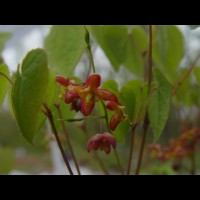
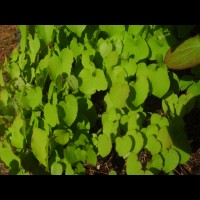
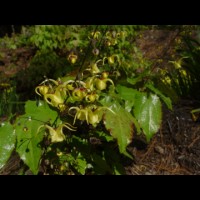
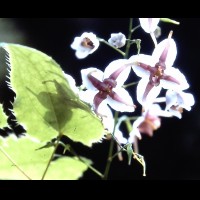

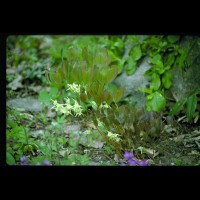
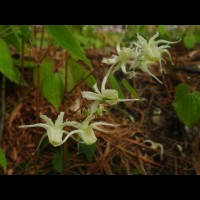
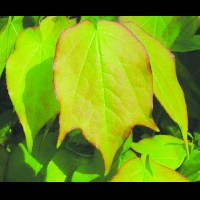
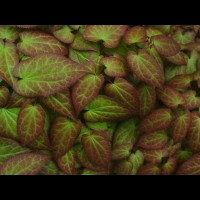
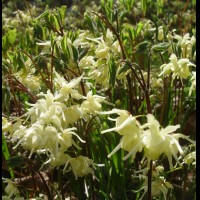
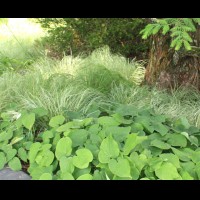
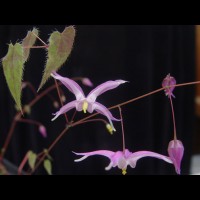
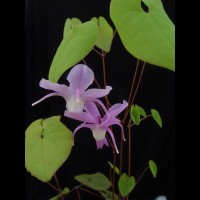
.jpg)

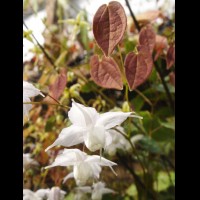
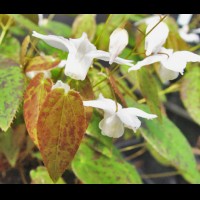
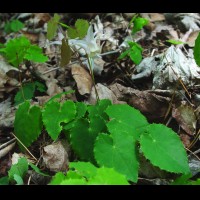
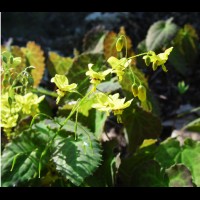
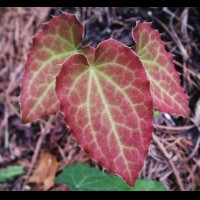
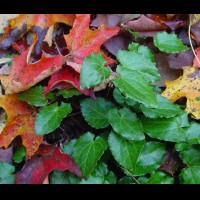
.jpg)
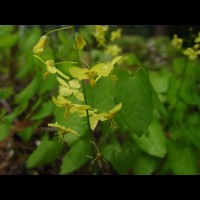
.jpg)
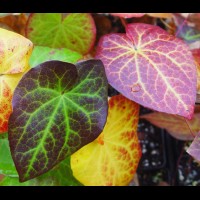
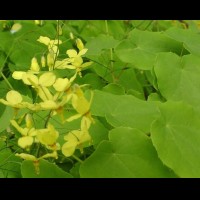
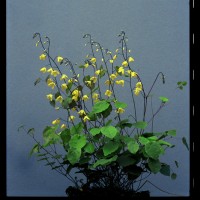
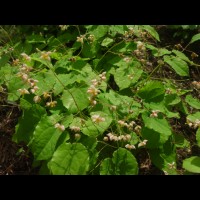
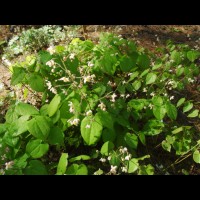
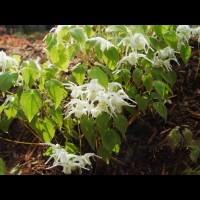
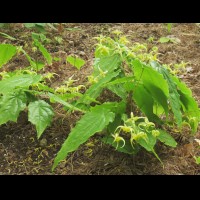
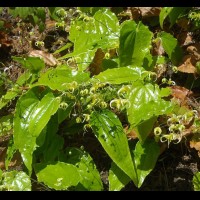
.jpg)
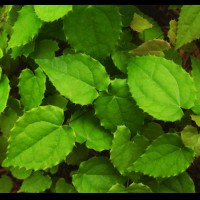
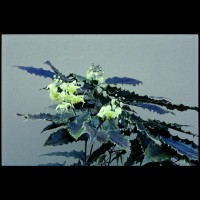
.jpg)
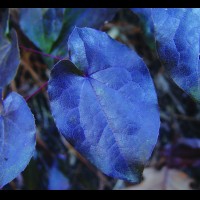
.jpg)
.jpg)


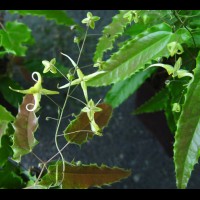
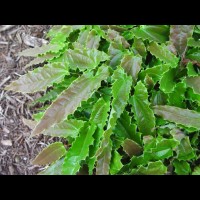
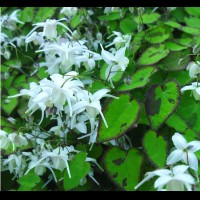
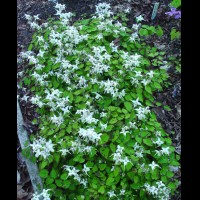
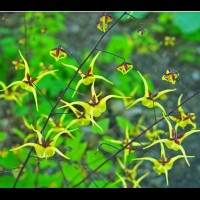
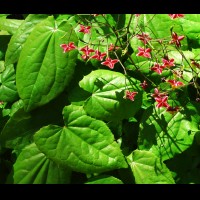
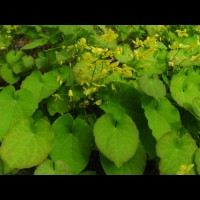
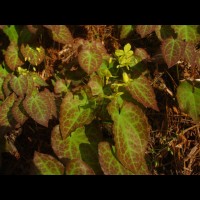
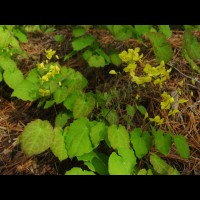
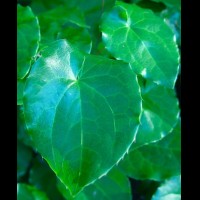
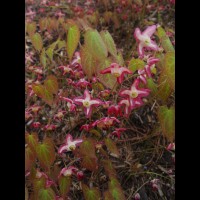
.jpg)
.jpg)
